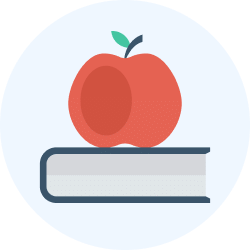Worksheet: Work of Our Body Parts | Let's Look Around & Learn 2: Solutions, Notes & Worksheets - Class 2 PDF Download
Q1: Multiple Choice Questions (MCQs)
(i) What is the primary function of the eyes?
(a) Smelling
(b) Seeing
(c) Hearing
(d) Tasting
(ii) Which sense organ helps us distinguish between big and small, tall and short?
(a) Nose
(b) Eyes
(c) Ears
(d) Skin
(iii) What is the main purpose of the ears?
(a) Tasting
(b) Seeing
(c) Hearing
(d) Smelling
(iv) Which sense organ is responsible for detecting different smells, both pleasant and unpleasant?
(a) Skin
(b) Tongue
(c) Eyes
(d) Nose
(v) What can our tongue help us determine?
(a) Temperature
(b) Sound
(c) Color
(d) Texture
Q2: Fill in the Blanks
(i) The skin helps us to ______ if a thing is hot or cold, soft or hard, smooth or rough.
(ii) Our legs assist us in various activities like standing, walking, running, playing, dancing, jumping, and many other _______________.
(iii) The nose allows us to smell the sweet fragrance of flowers and perfumes, as well as the unpleasant odor from heaps of garbage and dirty _______________.
(iv) Our arms help us to write, pick, hold, lift, throw, pull, and push _______________.
(v) The eyes enable us to see different colors and tell us about the difference between big and small, tall and _______________.
Q3: True or False
(i) The ears help us to see different things.
(ii) The nose cannot detect bad smells.
(iii) Our tongue helps us determine if a thing is sweet or sour, but not salty.
(iv) The skin cannot distinguish between hot and cold.
(v) Our legs are only useful for walking and standing.
|
120 docs
|

|
Explore Courses for Class 2 exam
|

|
















